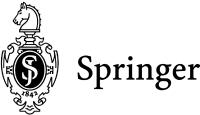Part III: Customer Centric Design and Development
Developing
product families for customization and efficient manufacturing
Customer Centric Design and Development
Mass Customization
aims at satisfying individual customers' needs with near to mass production
efficiency. The implications of this new paradigm have positive as well
as negative impacts for customers and manufacturers. On the one hand customers
benefit from the availability of wide product variety in the market place,
on the other hand they can be confronted with frustrating experience in
selecting the right product that would exactly fit their expectations
among a multitude of alternatives available. Similarly, manufacturers
face the trade off between attracting more customers by providing them
with large product variety and the need to manage this variety in design
and fulfillment in such a way that operational aims like low cost, short
lead times and high quality are met. The product design process (setting
the solution space) plays a major role when planning and implementing
mass customization. Providing value for customers by highly differentiated
products without increasing the prices beyond customers' affordability
is influenced heavily at the design level.
Thus, Part III of this book addresses the design issues of being customer
centric. Managing the variety in the design domain is a challenging problem
for manufacturers. The use of product families and modularization techniques
are important means of dealing with this variety issue. Designing a family
of products using a common platform approach instead of designing single
products has gained momentum in various industries. Product families and
common product platforms should help mass customizing companies to ensure
economies of scale (on the level of modular components and platforms)
while serving all customers differently (on the product level). In Chapter
8 Du, Jiao and Tseng present how an Architecture of Product Families (APF)
contributes to generating families of products efficiently. APF is a logical
organization of the product family covering the whole value chain from
both a sales and an engineering perspective. Customer requirements in
the functional domain are mapped with the variety parameters of a generic
data structure for such a product family. Instantiation of the generic
data structure determines the product structure and bills of materials,
specific to customer specification.
Siddique and Rosen extend this discussion in Chapter 9 and present an
approach to identify common platform architectures for a set of existing
similar products. This is a major challenge faced by companies becoming
more customer centric as it requires the development of product and process
models and tools to facilitate configuration reasoning. The authors present
an approach called 'Common Platform Identification (CPI)' focusing on
the configuration aspect. Given different platforms for similar products,
CPI first identifies the common modules. These modules are then re-modularized
to enhance commonality further by breaking the modules that are not fitting
to a common platform.
The topic of product design for modularity is also addressed in Chapter
10. Cox, Roach and Teare discuss how to increase productivity in the product
development process by using reconfigurable models and product templates.
In the last three decades, significant investments have been made in process
technologies to increase productivity and efficiency in product development.
But often the return on investment in these technologies has not yielded
the gains in productivity that were expected, as new process tools were
integrated into old product development processes. The authors argue that
investments in new customer centric manufacturing tools and technology
will be fruitful only when the product development process is made reconfigurable
correspondingly. The authors show that the keys to increasing productivity
are reconfigurable artifacts and product templates. By doing so, they
provide important input to set up product development processes in mass
customization systems which are characterized by the need for fast and
efficient new product development processes.
Case-Based Reasoning and TRIZ are significant methodologies that, although
not originally developed in a mass customization setting, can improve
the design and set- up of customization systems. Estimating the cost of
customization precisely, without exactly knowing all the manufacturing
parameters and conditions, is an important means of providing the right
quotations to customers during the order process. The ability to generate
a quick and accurate quotation brings a significant advantage to mass-customized
production companies. Unlike existing parametric cost estimation techniques
that compute an estimate based on a mathematical relationship between
product specification and cost, the approach presented by Wongvasu, Kamarthi
and Zeid in Chapter 11 uses case-based reasoning to model the relationship
between product configuration, resources requirement, and costs. Their
approach can be further extended to estimate cycle times.
The TRIZ methodology has been proposed for solving the contradiction or
trade-offs in different areas. TRIZ is a tactic for inventive problem
solving. Its basic philosophy is to challenge the contradictions accepted
as fundamentals. As the previous chapters of this book have shown, mass
customization is characterized by trade-offs and the need to counterbalance
these contradictions. Mann and Domb discuss in Chapter 12 the application
of TRIZ in the area of mass customization based on four paradigm shifts.
The authors analyze how systematic innovation methods are beginning to
be used to successfully overcome rather than accept the trade-offs and
compromises often held to be inherent. Understanding the trade-offs and
contradictions of mass customization provides an important contribution
to designing an appropriate "solution space" for a customer
centric enterprise.
|


